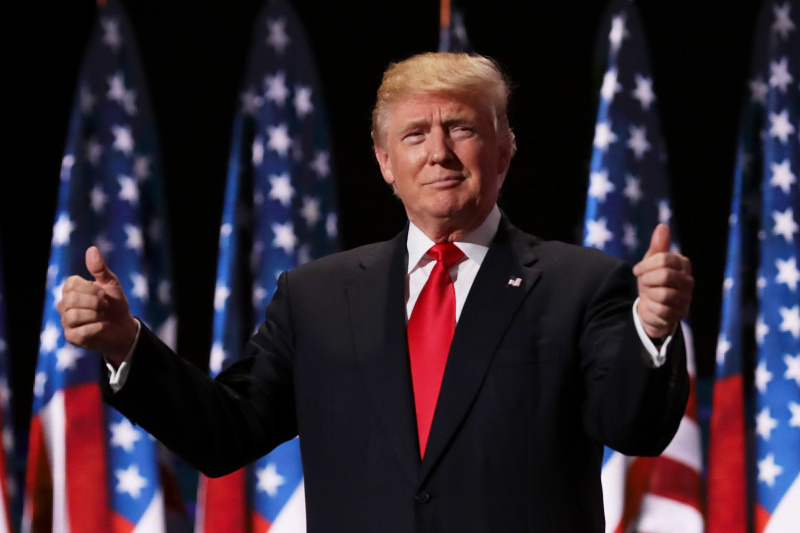Will India Gain More Than It Loses Under Trump 2.0? Here's What Strategic Affairs Experts Say
Challenges: On the flip side, Trump's protectionist stance might lead to tougher trade negotiations, with the U.S. pushing for more favorable terms. This could
- by B2B Desk 2024-11-07 07:11:07
As the possibility of Donald Trump returning to the White House for a second term looms, strategic affairs experts are closely analyzing the potential impacts on India. Trump's first term saw significant shifts in U.S. foreign policy, and a second term could bring further changes. The big question is: will India gain more than it loses under Trump 2.0?
Economic Relations: A Mixed Bag
During Trump's first term, the U.S. and India saw a strengthening of economic ties, highlighted by increased bilateral trade. However, Trump's "America First" policies also led to heightened protectionism, impacting global trade dynamics. Experts suggest that a second term could bring both opportunities and challenges for India.
Opportunities:
Trump's focus on bilateral trade agreements could benefit India, potentially opening up new markets for Indian goods and services. Strengthened economic ties could also lead to increased investment from U.S. companies in India, particularly in sectors like technology, pharmaceuticals, and manufacturing.
Challenges:
On the flip side, Trump's protectionist stance might lead to tougher trade negotiations, with the U.S. pushing for more favorable terms. This could put pressure on India's trade balance and complicate tariff-related discussions. Additionally, the U.S. might enforce stricter intellectual property rights, impacting India's pharmaceutical exports.
Defense and Security: Strengthening Ties
Defense cooperation between the U.S. and India saw significant progress during Trump's first term. Key defense agreements were signed, and joint military exercises increased.
Opportunities:
A second Trump term could further solidify defense ties. Experts predict more advanced military technology transfers and enhanced collaboration in areas such as cybersecurity and space defense. This would not only boost India's defense capabilities but also contribute to regional security in the Indo-Pacific.
Challenges:
However, Trump's transactional approach to alliances might demand more from India in terms of defense spending and strategic alignment with U.S. interests. Balancing these demands with India's independent foreign policy could be challenging.
Immigration Policies: A Double-Edged Sword
Trump's strict immigration policies were a significant concern for many countries, including India. The H-1B visa program, crucial for Indian IT professionals, faced numerous restrictions.
Opportunities:
While tighter immigration policies may continue, there could be an unexpected benefit for India. The restrictions might lead to a reverse brain drain, with highly skilled Indian professionals returning home, thus boosting domestic industries and innovation.
Challenges:
On the other hand, continued limitations on H-1B visas could hamper the growth of Indian tech companies that rely on talent mobility. This might also affect remittances from the Indian diaspora in the U.S., impacting India's economy.

Geopolitical Dynamics: Navigating Complex Waters
Trump's first term was marked by a confrontational approach towards China, which resonated with India's strategic interests. The Quadrilateral Security Dialogue (Quad) involving the U.S., India, Japan, and Australia gained momentum.
Opportunities:
A second Trump term could see a more robust Quad, providing a counterbalance to China's influence in the Indo-Pacific. This alignment could enhance India's strategic position and contribute to regional stability.
Challenges:
However, Trump's unpredictable foreign policy could also bring volatility. India's diplomatic challenge would be to manage its relations with both the U.S. and China, avoiding unnecessary confrontations while safeguarding its own interests.
Technology and Innovation: A Promising Frontier
The technology sector is one area where U.S.-India collaboration has immense potential. During Trump's first term, there were several initiatives to boost cooperation in areas like artificial intelligence, cybersecurity, and space technology.
Opportunities:
A second term could see increased investment in India's tech startups and more joint ventures between U.S. and Indian companies. This would drive innovation, create jobs, and contribute to India's economic growth.
Challenges:
Nevertheless, stricter U.S. regulations on technology transfer and data protection could pose hurdles. India would need to navigate these challenges carefully to maximize the benefits of technological collaboration.
Conclusion: A Balanced Perspective
In summary, the potential impact of Trump 2.0 on India presents a mixed picture. While there are significant opportunities in economic relations, defense cooperation, and technological collaboration, there are also notable challenges, particularly in trade negotiations, immigration policies, and geopolitical dynamics.
Strategic affairs experts suggest that India must adopt a nuanced approach, leveraging the opportunities while mitigating the risks. Building strong bilateral relations, maintaining strategic autonomy, and focusing on domestic capacity building will be key to ensuring that India gains more than it loses under a second Trump administration.
Also Read: Three Reasons Why Donald Trump Might Outperform the Polls

POPULAR POSTS
Loan EMIs to Drop as RBI Slashes Repo Rate - Full MPC December 2025 Highlights
by Shan, 2025-12-05 11:49:44
Zoho Mail vs Gmail (2025): Which Email Platform Is Best for Businesses, Startups, and Students?
by Shan, 2025-10-09 12:17:26
PM Modi Launches GST Bachat Utsav: Lower Taxes, More Savings for Every Indian Household
by Shan, 2025-09-24 12:20:59
$100K H-1B Visa Fee Explained: Trump’s New Rule, Clarifications & Impact on Indian Tech Workers
by Shan, 2025-09-22 10:11:03
India-US Trade Deal Soon? Chief US Negotiator Arrives in Delhi as Talks Set to Begin Tomorrow
by Shan, 2025-09-15 11:54:28
Modi Meets Xi: Trump’s Tariffs, Strategic Autonomy, and the Future of Asia’s Power Balance
by Shan, 2025-09-03 06:40:06
Google Claims Gemini AI Uses Just ‘Five Drops of Water’ Per Prompt, Sparks Debate
by Shan, 2025-08-22 12:34:27
RECENTLY PUBLISHED

Pine Labs IPO 2025: Listing Date, Grey Market Premium, and Expert Outlook
- by Shan, 2025-11-05 09:57:07

The Agentic Revolution: Why Salesforce Is Betting Its Future on AI Agents
- by Shan, 2025-11-05 10:29:23

Top 10 Insurance Companies in India 2026: Life, Health, and General Insurance Leaders Explained
- by Shan, 2025-10-30 10:06:42

OpenAI Offers ChatGPT Go Free in India: What’s Behind This Big AI Giveaway?
- by Shan, 2025-10-28 12:19:11

Best Silver Investment Platforms for 2025: From CFDs to Digital Vaults Explained
- by Shan, 2025-10-23 12:22:46





 Subscribe now
Subscribe now 